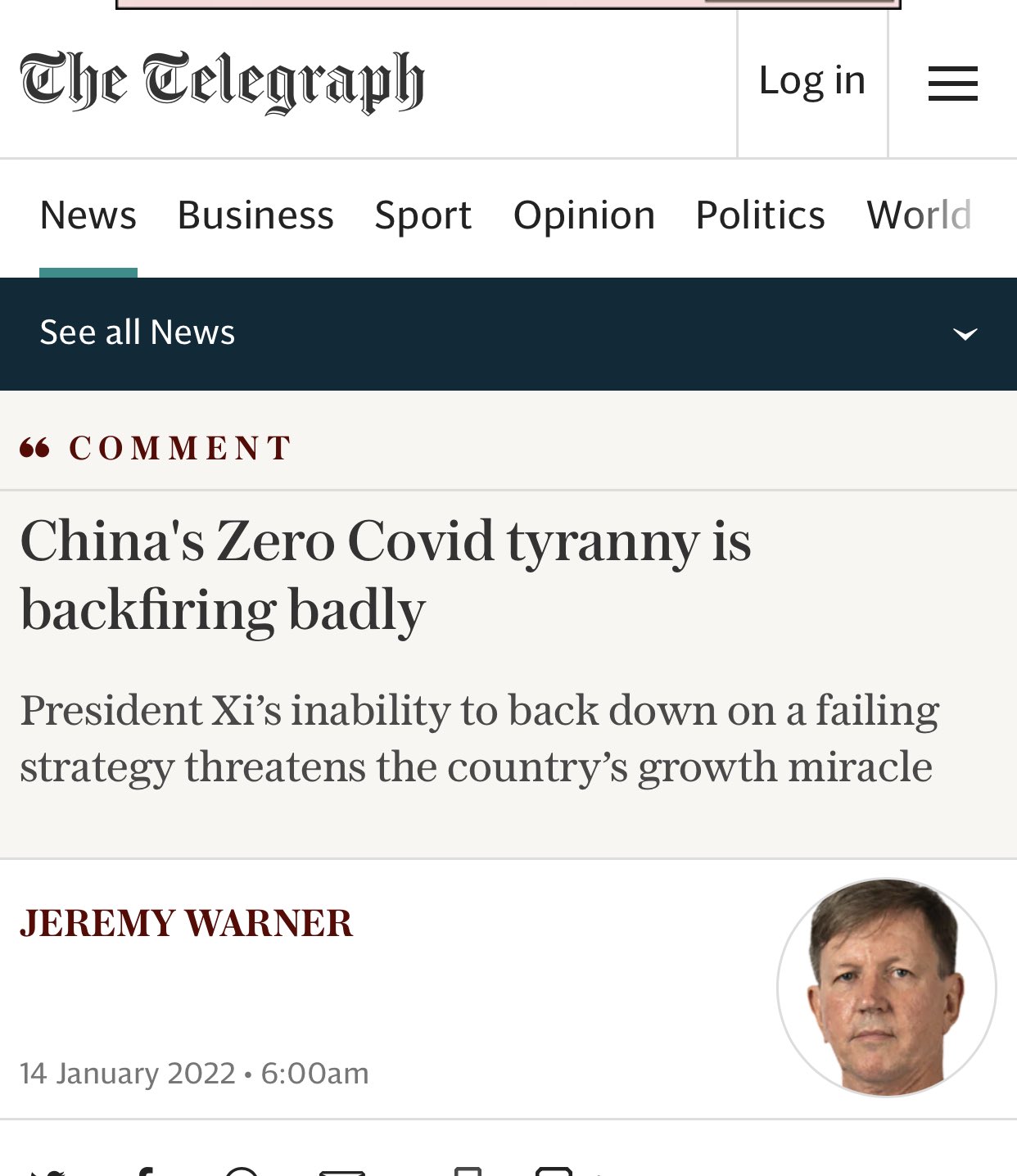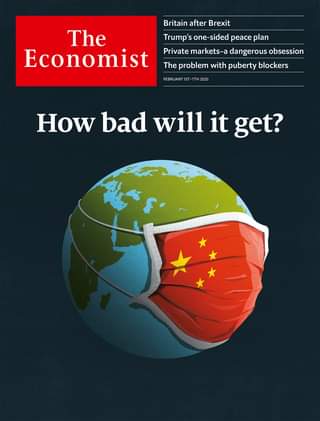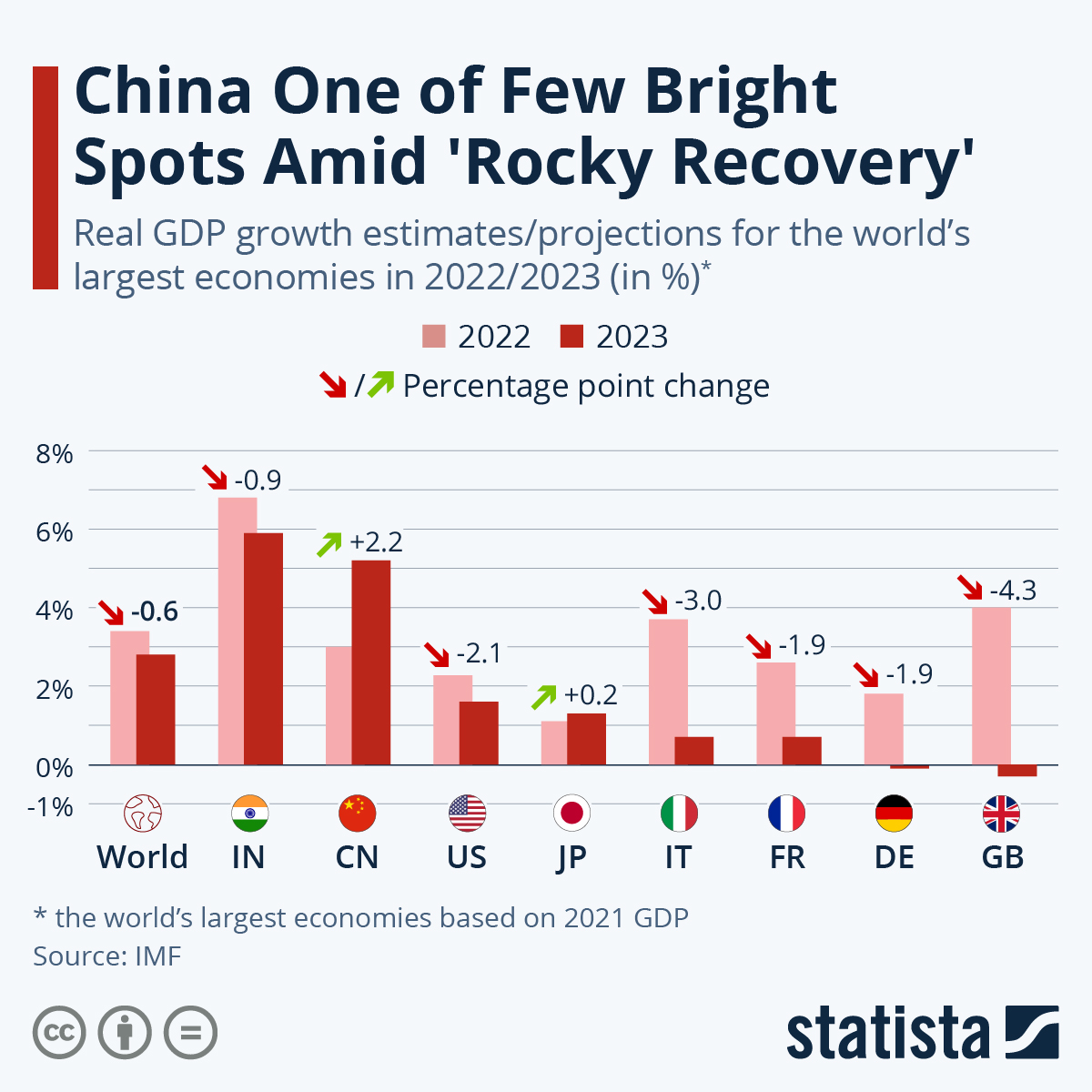No jurisdiction has managed a flawless COVID response, says Richard Cullen. But China, despite its imperfect COVID management experience, did better than any other major jurisdiction and, in fact, displayed many examples of early-best-practice unseen elsewhere. Exasperatingly, the West found, yet again, that it there is much it can learn from China – and then, naturally, it got back to lecturing China on how to do things properly!
BY MID-2022, AS I completed a chapter for a new book on the COVID pandemic, “Living with Covid” had, out of necessity, been adopted as the governing broad policy for dealing with that pandemic across most of the world.
At that time, however, Mainland China, Hong Kong, Macau and Taiwan continued to maintain their largely similar, Zero-COVID policies.

I wrote that maintaining a Zero-COVID policy might allow China to open-up after the COVID pandemic had largely peaked across the rest of the world. I further argued that, opening-up comprehensively would be significantly less dangerous if very high vaccination rates had been secured in China – and across most of the world, markedly reducing the infection risks associated with international travel.
This was a rather positive forward-looking view. Subsequent real-life events in China did not prove to be so sanguine. After the Omicron COVID variant took hold globally by early 2022 it proved to be strikingly contagious and difficult to contain.
China managed better than most to hold it back, initially, though at increasing personal and economic costs. Eventually, in early December, 2022, China switched abruptly from its previous Dynamic Zero COVID policy to its heavily revised, Optimized COVID policy.
MEDIA’S BAIT AND SWITCH
Naturally, the Mainstream Western Media (MWM) had been badgering China for well over a year to switch from its Zero-COVID policy to a more “up-to-date” (ie, Western) Living with COVID approach.

Also naturally, once China did just that, the same MWM began, with relish, to predict all manner of alarming consequences for China that were bound to follow from following this MWM advice (images of schoolyard “gotcha-games” swim into view).
In fact, China was publicly conversing about the need for an eventual transition, and what conditions might allow this, for well over a year before the big change came in late 2022.

In early October 2021, China’s top respiratory disease expert, Dr Zhong Nanshan, explicitly considered the opening of China’s borders, stressing the need for very high vaccination rates, as he discussed the prudential requirements for a transition to living with COVID-19 in China.
Curiously, two weeks after this, The Economist argued that “China has decided it does not want to live with the virus”.

SOUR RESPONSE OF NYT, ECONOMIST
As the Winter Olympics began in Beijing in early 2022, the MWM openly savoured the prospect of being able to report on some sort of Omicron-driven, COVID-meltdown during the games.
Alas, the COVID challenge was exceptionally well-managed and the games turned out to be a marvellous success.

How, though, to put a negative spin on this?
Picking up a theme borrowed from The Economist — misery loves company — The New York Times headlined how China had “Celebrated a Joyless Triumph”.
What a pair of glum chums.
You can imagine the matching headlines if the NYT and Economist had been around to see Jesus of Galilee walk on water: “Too Cheap to Pay the Ferry Fare”.
CRITICISM INTENSIFIED

Soon after, however, China found itself struggling badly to contain Omicron outbreaks in a growing number of locations, most strikingly in Shanghai, where arduous lock-downs extended for months on end from late February, 2022.
Potent criticism of the evident, severe personal anguish intensified and the ongoing economic costs were also massive.
A tragic fire in Urumqi, in Xinjiang, in late November, 2022, that left at least 10 dead, proved to be a trigger for a massive change in policy. It was said that COVID lock-down restrictions seriously hampered fire-fighting access to the residential building where the fire broke out.
Protests across China swiftly followed, culminating in the use of A4 sheets of blank paper being put to work to signal stark and growing dissatisfaction with the prevailing, harsh Zero-COVID regime.
Very soon after this, Beijing announced, with almost no media lead-in, the sharp switch to its Optimized COVID policy – the Chinese version of Living with COVID.
“HUNDREDS OF MILLIONS OF INFECTIONS”
Various modelled-studies predicted one to three million new COVID deaths in China, after this switch of policy, and, implicitly, hundreds of millions of infections. The WHO Website reported that by late April, 2023, just on 100 million confirmed COVID cases had been reported in China and just over 120,000 deaths.

The Johns Hopkins figures (reported by the NYT) were lower than those from the WHO but concerns about undercounting were expressed.
HERE’S WHAT ACTUALLY HAPPENED
What a range of global reports on actual infections and deaths show is that, by the end of February, 2023, the Omicron infection wave in China was generating only marginal new infections.

Now that the COVID dust has significantly settled in China, the following points are observable:
China took a critical but, by then, unavoidable gamble when it swiftly switched to a Living with COVID approach in late 2022.
China had, though, been carefully considering how to transit from its previous Dynamic Zero-COVID approach for well over a year.
It appears that the experienced, former Shanghai chief and new Chinese Premier, Li Qiang, advised Beijing that, based on Shanghai’s experience, containing Omicron long-term was not feasible.
Beijing showed scant concern about providing any sort of media-based, detailed, justifying explanation for this major policy change.
Although under-vaccination of the aged remained a problem, around 3.5 billion vaccination doses had been administered in China, within its 1.4 billion population.
Omicron spread quickly and the death toll rose – but then the outbreak faded rather swiftly – and the fatality rate appears to have been significantly lower than certain modelling predictions.
SPEEDY RECOVERY
China has since opened up with alacrity and, based on figures emerging so far, with a robust impact on economic activity.

Reuters reported that the annualized growth figure for the first quarter of 2023 was 4.5% (exceeding expectations) compared to 1.1% GDP growth in the US and 0.3% in the EU.
Not for the first time, the Communist Party of China (CPC) demonstrated a capacity for decisive responsiveness, following the A4 Protests.
SIMPLISTIC AND WRONG
Recent international polling in China by IPSOS (from France – on population happiness) and Edelman (from the US – on trust in governments) has confirmed that the China rates higher in both polls than almost all other jurisdictions surveyed worldwide.

These high ratings reflect what is often seen as the remarkable Performance Legitimacy (PL) of the CPC established since 1978.
Western commentators frequently argue that this PL factor depends on the CPC continuously providing rising economic rewards for most people.
This is simplistic and wrong.
Just as in Singapore (where a single party has also governed for many decades) the population understands that how well a government performs when facing head winds may be even more important than what it can achieve when supported by tail winds.
AVOIDED SEVERAL MILLION DEATHS
We are far from witnessing final closure with respect to the COVID pandemic, including in China. For one thing, Long-COVID remains a major concern, looking forward.

China, though, has almost certainly lowered this risk by protecting its population so well from infection by the conspicuously more dangerous, early COVID variants. Indeed, using an American metric, by applying its Zero-COVID policy so effectively for around two years, China may have forestalled several million deaths and several hundred million infections during that dangerous, pre-vaccine period.
This same policy also protected China – and the world – by precluding China from becoming a major, additional incubator of new COVID variants.
BEST PRACTICE
China, despite its imperfect COVID management response, still displayed many effective examples of early-best-practice unseen in other large-population jurisdictions – and it managed this with a GDP per capita figure which is still a fraction of that found in the developed world.
When The Economist talks about economics, the analysis is typically anchored and engaging – even if recurrently tendentious. (When The Economist engages political-top-gear these days warped reasoning is more likely to let off the leash: they have, believe it or not, just created a keenly promoted newsletter called “The War Room”.)
THE ECONOMIST: SUPERIORITY OF THE WEST
Recently The Economist discussed macro-economics, COVID and China. In a report entitled, “Is China better at monetary policy than America?” there is a discussion of how China has, unlike the US and much of the West, come through COVID without high inflation (fueled by printing and borrowing money on a vast scale) driving the need to raise (previously slashed) interest rates.

Adam Posen, of the US Peterson Institute, said that other central bankers would be very happy to China’s inflation record of around 2%, according to this report.
Interestingly, for The Economist, the true explanatory bottom-line for this encouraging outcome was that: “Thanks to the country’s aggressive containment of the pandemic in 2020, the central bank did not have to cut interest rates as much as the Fed to rescue the economy. And because of China’s bull-headed commitment to zero-covid policies last year, the central bank did not need to raise interest rates to contain inflation.”
Let’s see if we have this right. Being “bull-headed” signals wayward failure to behave in accordance with relevant, superior Western norms.
Yet looking at the comparative COVID statistics – and according to The Economist’s own reasoning – if the West had applied more “bull-headedness” over the last three years: hundreds of thousands of lives might have been saved and millions of infections prevented; plus, less money printing, debt and interest rate slashing would have been needed. And much of the current inflation crisis might have been avoided.
Exasperatingly, the West finds, yet again, that it there is much it can learn from China – as this recent report from The Economist confirms.
Then, naturally, it averts its gaze -and gets back to serial Sino-thumping: all that “bull headed” behaviour – thank goodness we avoided that!

DISMAL WAR-TILTED PERSPECTIVE
China, meanwhile, knows it has much to learn from the world and is happy to do so.
This is a central difference that looks set to continue underpinning the rise of China over coming decades.
The East, currently guided by China’s exceptional example, radiates a consistent, collective, watchful optimism.
Led by the US, the West knows best, naturally. Yet it increasingly asserts this while exuding a dismal, war-tilted perspective on the future.
Place your bets, ladies and gentlemen.
Richard Cullen is an adjunct professor of law at Hong Kong University and a popular writer on current affairs.
Image at the top from Kay Lau/ Unsplash.
